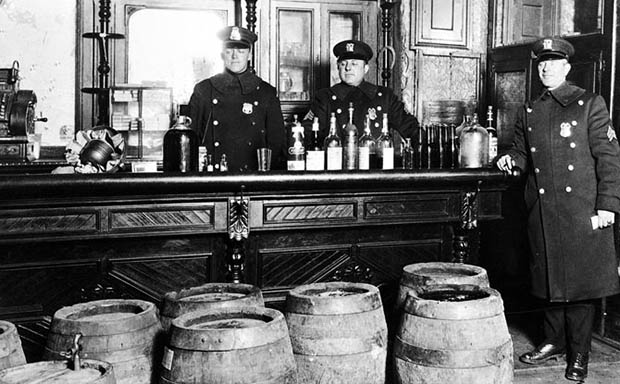The report issued this week by the HSE on the harm that alcohol abuse does to others is described as “new”. ‘The Untold Story: Harms Experienced in the Irish Population Due to Others’ Drinking’ is to be welcomed, but its contents are anything but new, and anything but untold.
The same message could have been – and was – issued repeatedly over the last two centuries. Ever since Fr Matthew took up his first campaign of temperance in the 1830s, or the Pioneers launched their admirable organisation in the 1890s, or Alcoholics Anonymous came on the scene in the 1930s and 1940s. Not an untold story: more an oft-repeated lamentation.
Yes, the HSE report, compiled by Dr Ann Hope, Prof. Joe Barry and Prof. Seán Byrne, brings updated data and new statistics to the subject – and emphasises the harm, not just to the alcoholic, but all those around him (or her), including family, friends, colleagues and the wider society.
But frankly, dear doctors, the information that alcoholism especially harms women and children is well established. It was a big crusade for American feminists in the 1900s who attacked saloon bars with hatchets – and were the driving force behind Prohibition in 1919.
Mocked
Prohibition is now mocked because it didn’t work in the long run, but the reasons for its enactment are usually ignored. Because women, most particularly, came to see how much collateral damage was caused by alcohol abuse.
And now Prof. Barry makes the point – it still remains a very forceful one – that drinking isn’t just about individual choice: it nearly always involves others. He called the abolition of the Good Friday pub closures “a further enabler” of the boozing culture.
The information in this report can always do with reiteration, but we also need some fresh thinking on alcoholism.
I am coming, reluctantly, to the view that there is sometimes a genetic element in alcohol abuse. I am beginning to wonder if there is a case for special awareness-raising among families where the addiction pattern re-occurs.
It’s a reluctant view because essentially I believe in free will, but I think we must also be open to the question of genetic vulnerability to alcoholism. The boffins should put some more research into this question.
It’s good to see Martin Luther King featured on an Irish stamp, not just because MLK deserves the accolade – also because Irish stamps could do with more human-interest themes. The most recent batch of national stamps I purchased earlier this month features a brown, round object which looks remarkably like a cow-pat: on closer inspection, it turns out to be a gold disc from 2,000 years BC.
It’s nice to advertise Celtic antiquity philatelogically, but there is nothing to compare with the human face. John Bowman did a beautiful programme on RTÉ 1 last Sunday about the life of the great Irish diva Margaret Burke Sheridan, who died in 1958. The Castlebar-born prima donna would be a fitting candidate for a 2018 Irish stamp – a remarkable Irishwoman whose singing of Madama Butterfly enthralled Puccini himself.
Keep pro-life issues separate
I believe it is a tactical (and perhaps factual) error to link the issue of abortion with euthanasia, even if there is some common ground.
It isn’t necessarily true that abortion legislation is followed by legalised assisted suicide. Britain has a very liberal abortion law, as we know, enacted in 1967, but every attempt so far to usher in euthanasia has been defeated in the House of Commons. Prime Minister David Cameron, generally liberal on social issues, was strikingly opposed to legalised euthanasia when it was proposed under his stewardship.
Euthanasia
British citizens who favour euthanasia – a very active lobby – complain repeatedly that they are “forced” to go to Switzerland to kill themselves, and thus they are deprived of “bodily autonomy” in their own country.
Yet Switzerland, while renowned for its liberal regime of assisted suicide, is rather conservative about abortion, and by European standards, has relatively low abortion rates.
So it doesn’t always follow that one practice is linked to the other.
In the debate about abortion, just one pro-life point can effectively be made: the truth about the development of human life from conception.


 Mary Kenny
Mary Kenny Prohibition was enforced in USA from 1920 to 1933
Prohibition was enforced in USA from 1920 to 1933